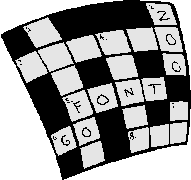|
LIFE SCIENCE |
Chapter 9
Vocabulary
- ____________ -chemical compound made out of sugar; forms tangled fibers in the cell walls of many plants and provides structure and support.
- ____________ -pairs of cells that surround stomata and control their opening and closing.
- ____________ -flowering vascular plants that produce fruits containing one or more seeds; monocots and dicots.
- ____________ -waxy, protective layer that covers the stems, leaves, and flowers of many plants and helps prevent water loss.
- ____________ -angiosperm with two cotyledons inside its seed, flower parts in multiples of four or five, and vascular bundles in rings.
- ____________ -vascular tissue that produces xylem and phloem cells as a plant grows.
- ____________ -angiosperm with one cotyledon inside its seed, flower parts in multiples of three, and vascular tissues in bundles scattered throughout the stem.
- ____________ -vascular plants that do not flower, generally have needlelike or scale-like leaves, and produce seeds that are not protected by fruit; conifers, cycads, ginkgoes, and gnetophytes.
- ____________ -vascular tissue that forms hollow vessels that transport substances, other than sugar, throughout a plant.
- ____________ -tiny opening in a plantís epidermis through which carbon dioxide, water vapor, and oxygen enter and exit.
- ____________ -plant that absorbs water and other substances directly through its cell walls instead of through tube-like structures.
- ____________ -species that break down rock and build up decaying plant material so that other plants can grow; first organisms to grow in new or disturbed areas.
- ____________ -threadlike structures that anchor nonvascular plants to the ground.
- ____________ -plant with tube-like structures that move minerals, water, and other substances throughout the plant.
- ____________ -vascular tissue that forms tubes that transport dissolved sugar throughout a plant.
Chapter 10 Vocabulary
- ____________ - female reproductive organ inside the flower of an angiosperm; consists of a sticky stigma, where pollen grains land, and an ovary
- ____________ -male reproductive organ inside the flower of an angiosperm; consists of an anther, where pollen grains form, and a filament.
- ____________ -small structure produced by the male reproductive organs of a seed plant; has a water resistant coat, can develop from a spore, and contains gametophyte parts that will produce sperm
- ____________- in plants, swollen base of an angiospermís pistil, where egg-producing ovules are found
- ____________ -waterproof reproductive cell of a fungus that can grow into a new organism; in plants, haploid cells produced in the gametophyte stage that can divide by mitosis to form plant structures or an entire new plant or can develop into sex cells
- ____________- series of events that results in the growth of a plant from a seed
- ____________-leaf of a fern that grows from the rhizome
- ____________- plant life cycle stage that begins when cells in reproductive organs undergo meiosis and produce haploid cell (spores)
- ____________- underground stem
- ____________-transfer of pollen grains to the female part of a seed plant by agents such as gravity, water, wind, and animals
- ____________- fern structures in which spores are produced
- ____________- plant life cycle stage that begins when an egg is fertilized by a sperm
- ____________- in seed plants, the female reproductive part that produces eggs
- ____________- small, green, heart-shaped gametophyte plant form of a fern that can make its own food and absorb water and nutrients from the soil
 Click
here for a review puzzle.
Click
here for a review puzzle.